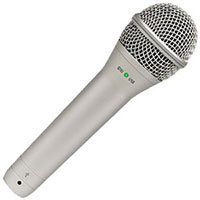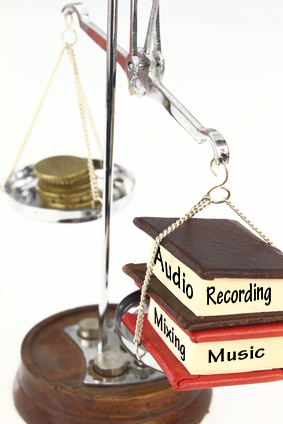
As heretical as it sounds, I champion the use of the “zero-to-five-dollar” budget for folks to get started in recording audio at home. I’m not dissuading anyone from purchasing gear they can afford (and understand!), but I know what kind of audio quality can be produced with the cheapest of equipment, and it’s better than what a lot of folks are turning out with gear costing hundreds of times the budget I recommend.
In a nutshell, I encourage people to start out with stuff they probably already have: a computer with a sound card, an internet connection, an mp3 player (for the headphones only:)), and a microphone. I even want those new to recording to start with the cheapest PC mic they can get their hands on. Computers used to come with them. If you don’t have one, you can remedy that for about $5.00. If you do have one, then you’re one of the lucky folks who get to start using the recording studio they didn’t even know they had!
The only other thing, other than a sense of adventure and a little time, you’ll need is some audio recording and editing software. “Aha!,” I hear you cry. “We knew there had to be something expensive in here somewhere.” Sorry to disappoint you, but the software I’m talking about is free of charge! This is why I wanted you to have an internet connection. Do a search for Audacity audio software, which is open source (not shareware!), then install it.
OK, so this is the “starter” studio, and you can do amazing things with pretty darned good audio quality at this level. You’ll just have to do a little more work in order to clean up the noise that comes with those PC microphones plugged into the pink input of a sound card. It’s not a problem, since Audacity has noise reduction tools you can use. Hey, if you’re broke, what’s a few more minutes to get decent audio right?
But if you just happen to have 25 bucks you can contribute to the audio cause, you can get your first audio quality “level-up,” heck, “quantum leap” is more like it. For $59 (as of April 2019), a USB microphone such as this Samson Q2U
I just ran a test using the cheap plastic mic to record my voice, then using a USB mic to do it. The quality difference is awesome! The biggest difference is how quiet the playback of the recording made with the USB mic is compared to the old-style PC mic. At the same time, my voice sounded full and present, a little less “hollow” than with the plastic one. And to top it off, this means you won’t have to spend nearly as much time cleaning up hissy audio after the fact.
Check out my review of the Samson Q2U – with audio samples, so you can hear what it sounds like for yourself – here: Review Of The Samson Q2U Microphone – Hear The Test Audio For Yourself
Many folks will be satisfied with what they can achieve with the “zero-to-five-dollar” budget studio. But isn’t it nice to know that the next “upgrade” is only $49 away. And subsequent upgrades in quality and capability for your studio are also in increments of $25-$50. There is no need to run to the music store and plop down a thousand dollars gear and software, unless you have money to burn.
 You wanna know the secret to getting good quality audio on your home recording studio? Learn to cut tomatoes. Okay, that was confusing. Here is what I mean. Everyone has their favorite tool for doing certain kinds of jobs. For example, I use the large chef’s knife to slice tomatoes, but my wife likes the paring knife for the same job. They both work. And if I lost my knife, I could use my wife’s. Nobody likes change, but at the end of the day, as long as you know what the job is (smite the tomato into tiny pieces), any knife will do.
You wanna know the secret to getting good quality audio on your home recording studio? Learn to cut tomatoes. Okay, that was confusing. Here is what I mean. Everyone has their favorite tool for doing certain kinds of jobs. For example, I use the large chef’s knife to slice tomatoes, but my wife likes the paring knife for the same job. They both work. And if I lost my knife, I could use my wife’s. Nobody likes change, but at the end of the day, as long as you know what the job is (smite the tomato into tiny pieces), any knife will do.